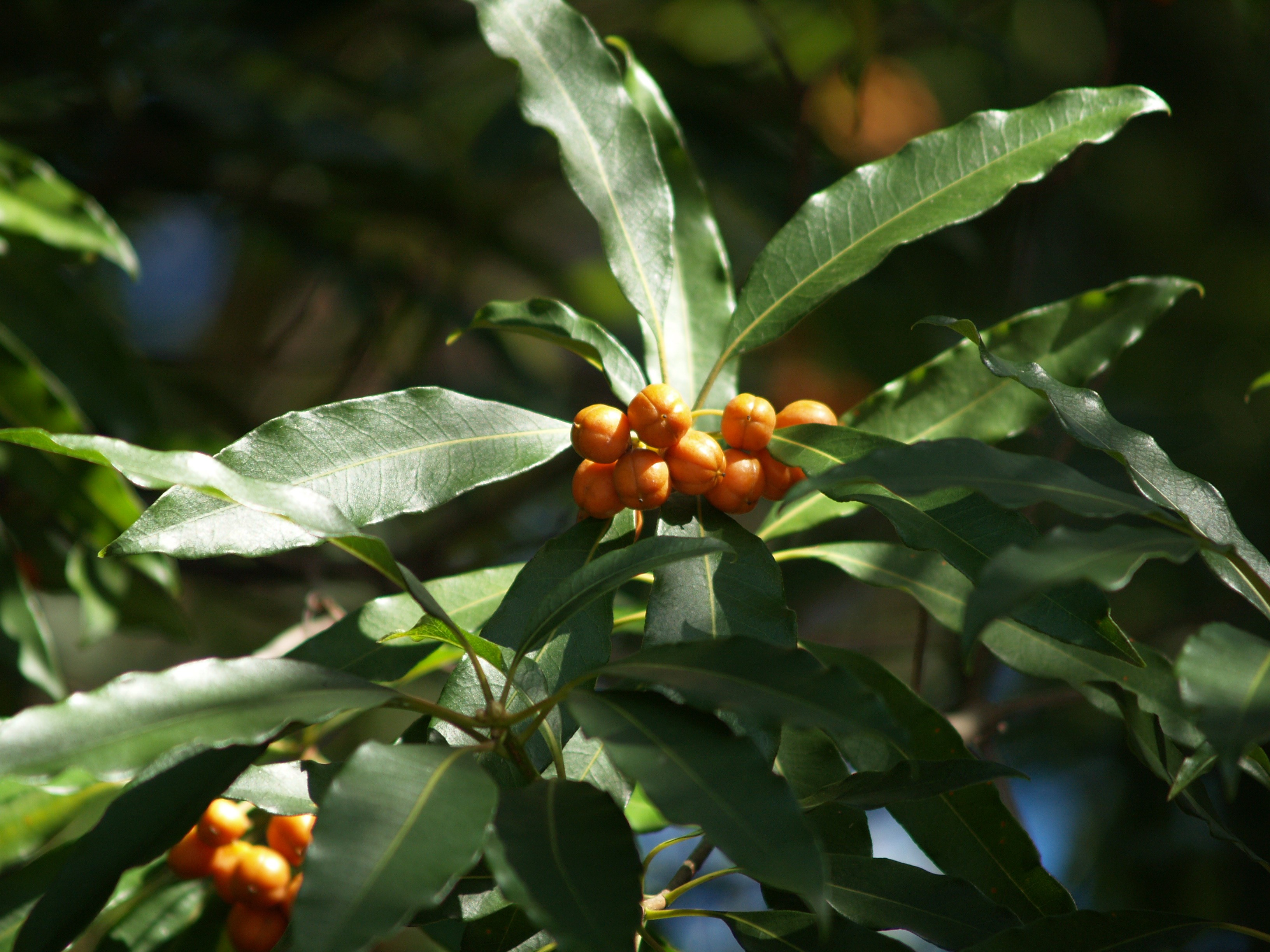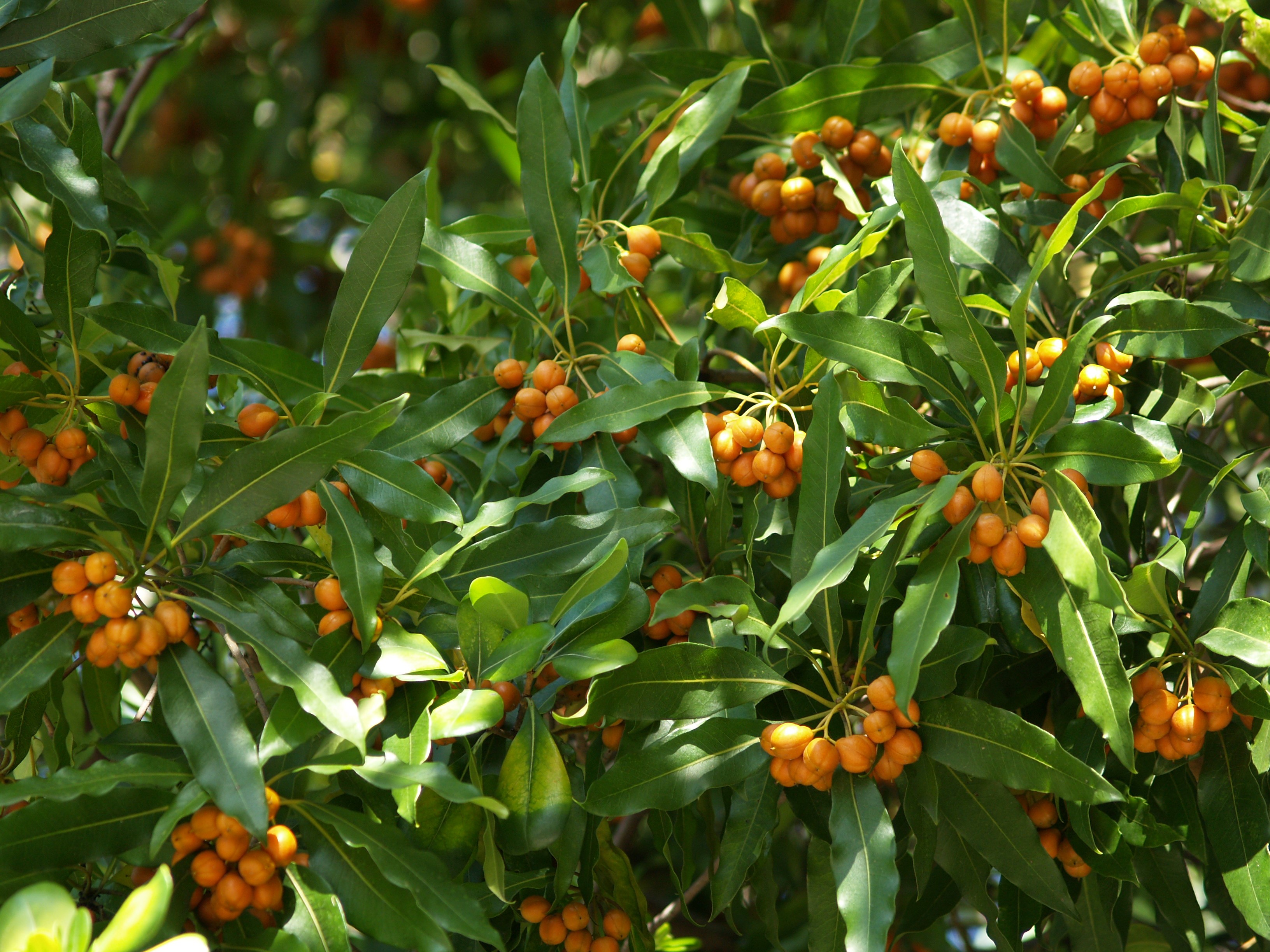
Australian Cheesewood
Pittosporum undulatum
Family and description
Member of the Pittosporaceae family, the Australian Cheesewood, is an evergreen tree that can reach a height of up to 15 m. It leaves are dark green, oval in shape and have undulating edges, where the epithet undulatum comes from. When crushed, these leaves give off a strong odour.
Its flowers have white, lanceolate petals gathered in umbelliform corymbs. They are unisexual, although remains of both sexes are identifiable. Very aromatic, their sweet perfume is more intense at night. Flowering occurs in the early months of spring.
The fruit, which appears in early summer, is an ovoid capsule with two valves. Initially it is green, turning orange when it matures. It contains several red, resinous seeds, which also have a strong odour.
Its trunk is grey and irregular and the crown is pyramidal.
Origin and habitat
This plant is originally from the wetlands of Southwest Australia. In Portugal it was introduced as an ornamental tree and became invasive, especially in the Azores and Madeira, where conditions are ideal for its development, namely the temperate climate and humidity.
Uses and curiosities
The Australian Cheesewood is a tree that supports pruning well and is widely used in hedge partitions but also for ornamental purposes, in parks and gardens. It is also known as the incense tree but is not the real incense tree, which is from African species of the genus Boswellia, Burseraceae family.
It is an extremely fast-growing tree, quickly colonizing deforested areas. This species has an opportunistic ecological behaviour, taking advantage of environmental changes resulting from human activity, namely the fragmentation of habitats and the suppression of forest fires. It has a high degree of phytotoxicity towards other plants, preventing other species from developing in its vicinity. It is also resistant to atmospheric pollution, enduring life in large cities well. It has the status of an invasive species according to Annex I of Decree-Law No. 565/99, of 21 December.



